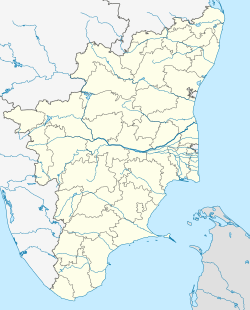Draft:Raja Kuberar Temple
Submission declined on 31 July 2025 by AlphaBetaGamma (talk).
Where to get help
How to improve a draft
You can also browse Wikipedia:Featured articles and Wikipedia:Good articles to find examples of Wikipedia's best writing on topics similar to your proposed article. Improving your odds of a speedy review To improve your odds of a faster review, tag your draft with relevant WikiProject tags using the button below. This will let reviewers know a new draft has been submitted in their area of interest. For instance, if you wrote about a female astronomer, you would want to add the Biography, Astronomy, and Women scientists tags. Editor resources
|  |
| Submission declined on 31 July 2025 by Suitskvarts (talk). This submission is not adequately supported by reliable sources. Reliable sources are required so that information can be verified. If you need help with referencing, please see Referencing for beginners and Citing sources. Declined by Suitskvarts 2 hours ago. |  |
| Submission declined on 31 July 2025 by DoubleGrazing (talk). This submission is not adequately supported by reliable sources. Reliable sources are required so that information can be verified. If you need help with referencing, please see Referencing for beginners and Citing sources. This draft's references do not show that the subject qualifies for a Wikipedia article. In summary, the draft needs multiple published sources that are: Declined by DoubleGrazing 4 hours ago.
|  |
| Om Sri Raja Kubera Siddhar Peedam | |
|---|---|
Kuberapattinam | |
 | |
| Religion | |
| Affiliation | Hinduism |
| Deity | Lord Kuberar,Lord Shiva |
| Location | |
| Location | Kanchipuram, Tamil Nadu Kuberapattinam, Vellagate, Kanchipuram |
| State | Tamil Nadu |
| Country | |
| Geographic coordinates | Location: 12°52′27″N 79°41′51″E / 12.87417°N 79.69750°E |
| Architecture | |
| Creator | Thavathiru Sivasri Deva Raja Kubera Siddhar Swamigal |
| Completed | 2019 |
Om Sri Raja Kubera Siddhar Peedam, also known as Dhana Viruksha Raja Kubera Sthalam, is a Hindu temple located in Kuberapattinam, near Kanchipuram, Tamil Nadu, India. The temple is dedicated to both Lord Shiva and Lord Raja Kuberar, who are worshipped together in a unique form known as "Sivasaga".
Etymology and Significance
[edit]The mantra "Om Yakshaya Kuberaya Vaishravanaya Dhanadhanyadhipataye Dhanadhanyasamriddhim Me Dehi Dapaya Svaha" is spiritually significant in the worship of Lord Kuberar. The temple's unique deity form, "Sivasaga", combines "Siva" (representing Lord Shiva) and "Saga" (symbolizing the boundless prosperity of Lord Kuberar), reflecting divine grace and abundance.
Sthala Purana
[edit]The origin of the temple is linked to Thavathiru Sivasri Deva Raja Kubera Siddhar Swamigal, a devotee of Lord Shiva who performed regular Girivalam around Arunachala on every full moon night. During one such occasion, a Siddhar appeared to him at the Kuberalingam temple and revealed a divine vision: Swamigal was destined to establish a temple where Lord Kubera would be worshipped as "Om Sri Raja Kuberar".
Following divine instructions received through dreams, Swamigal began his spiritual mission from a small apartment in Ashok Nagar, Chennai. Eventually, he was guided in a dream by Lord Balaji to establish the temple at a site now known as Kuberapattinam. The temple was consecrated in 2019.
-
Raja Kuberar
Location
[edit]The temple is situated in Vellagate, Kanchipuram, along the Bangalore–Chennai Highway. The area has since become known as Kuberapattinam, symbolizing its association with wealth and spiritual awakening.
Architecture and Features
[edit]The temple houses both Lord Shiva and Lord Kuberar in a vertically aligned sanctum:
- Lord Shiva is enshrined as Vaidhyanatha Swami in a meditative pose (Dhyana Nilai), standing 11 feet tall.
- Directly below Him sits Lord Kuberar, 6 feet tall, in a rare seated posture, gazing toward Lord Balaji of Tirupati.
This alignment symbolizes harmony between health (Arokiyam) and prosperity (Aishwaryam).
Sanctum and Deities
[edit]- **Uchista Ganapathi**: A rare form of Ganesha revered in Siddha traditions. He is depicted with Sri Neelavani Amman seated on his lap.
- **Sri Neelavani Amman**: Represents the confluence of Goddess Lakshmi (Sri), Goddess Durga (Neela), and Goddess Saraswati (Vani).
- **Agathiyar Shrine**: Devotees first offer prayers here, honoring the foremost among the 18 Siddhas.
Architectural Highlights
[edit]- **Nine Sacred Steps**: Represent spiritual ascension; accessible only to those who observe a special Viratham (vow).
- **18 Siddha Pillars**: Surrounding the sanctum, each pillar is dedicated to one of the 18 Siddhars, believed to grant blessings of health, prosperity, and success.
Raja Kuberar Iconography
[edit]Lord Kuberar is depicted with one hand in Abhaya Mudra (protection) and the other holding the Akshaya Patra, symbolizing eternal abundance.
Cultural and Spiritual Significance
[edit]The temple is considered a powerful spiritual center for seekers of health, wealth, and spiritual upliftment. It blends Siddha tradition, divine alignment, and devotional practice in a single sacred space.
See also
[edit]References
[edit]https://www.visittemples.com/hindu/omsrirajakuberarsiddhartemplekancheepuramtamilnadu
https://www.youtube.com/watch?v=uOxdbvXGeGM
https://www.youtube.com/watch?v=Mpqq5dnuBvo
https://www.youtube.com/watch?v=G6wrnMAYZb8
External links
[edit]- Official website of the temple (if available)
- https://tamil.samayam.com/city/kanchipuram/special-puja-at-sri-raja-kubera-temple-on-thursday/articleshow/112198854.cms
- https://www.google.com/search?q=raja+kuberar+temple&num=10&sa=X&sca_esv=7c7dba3f1b01f245&rlz=1C1VDKB_enIN1066IN1066&sxsrf=AE3TifMuNXoYXhQJLr8SFn1eV1RY_nN19w%3A1753968414133&udm=50&source=lnms&fbs=AIIjpHxU7SXXniUZfeShr2fp4giZ1Y6MJ25_tmWITc7uy4KIetxLMeWi1u_d0OMRvkClUbalBeyXa8ssyRd_VUj5FQB2aTtVSqS-8espAxkq1fZ3U7lGlT9cP6FXyGQngOv_CCADopsXkVDJjBiwGRjwY_8IoP05MChc5gdqniqdF5e_bpsKBqlzaGeWP5BVUULJoZB4HGtZlG5VVtvBSU1W5tnGlvR_1g&aep=1&ntc=1&ved=2ahUKEwi-_JXCmeeOAxVT8zgGHTKDE-sQ2J8OegQICRAD&biw=1920&bih=919&dpr=1&mstk=AUtExfCRAVlFBviWiioaVNNAEFiZw_bZ1_gu4yHWqbRiwKWIPw96qpI1rsI2ANFIF0TLM7g83XVr5k-3ydIsWWsPyospdCTCLWD24N60qkXBDe_kG-29Dci94xxQPa19Hdm8Y-KgaLmQVkETmFW-EwVmfkfgQU_1cJ3CsF6d25Pfw0-2OSfPs4Zo3NvJwvTnaRwTX6s0iTuAx_YGIdgCjOGo29Q4_7a6Ilx_ZFKAF56rL5EcWZEO09hpxCNzbmJmGlqxlALS5OsEOohQ-Jrt3ormGQjaA6Jx-qLAF3rHnBzRYxV8t1w5-OU1JcDAYAi42ax33daJr8hOL_Zh0g&csuir=1&mtid=Im-LaNHZItud4-EPp5SX4A8
- https://www.visittemples.com/hindu/omsrirajakuberarsiddhartemplekancheepuramtamilnadu#:~:text=This%20Temple%20is%20also%20called,are%20found%20as%20Dwara%20Baalakas.
- https://tamil.samayam.com/city/kanchipuram/special-puja-at-sri-raja-kubera-temple-on-thursday/articleshow/112198854.cms
Category:Hindu temples in Kanchipuram district Category:Shiva temples in Tamil Nadu Category:Kubera temples Category:Religious buildings completed in 2019




- Promotional tone, editorializing and other words to watch
- Vague, generic, and speculative statements extrapolated from similar subjects
- Essay-like writing
- Hallucinations (plausible-sounding, but false information) and non-existent references
- Close paraphrasing
Please address these issues. The best way is usually to read reliable sources and summarize them, instead of using a large language model. See our help page on large language models.